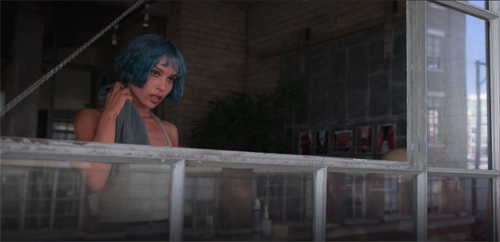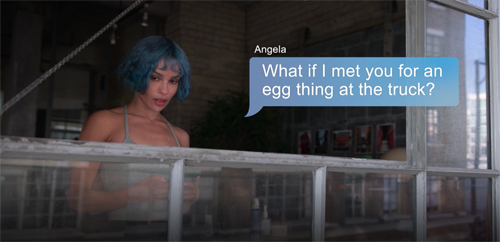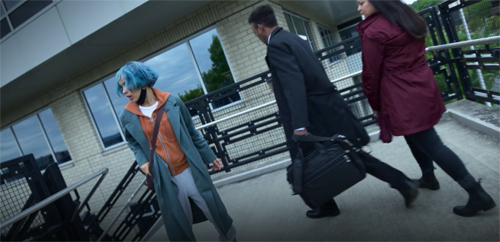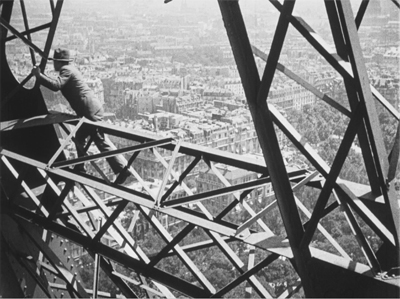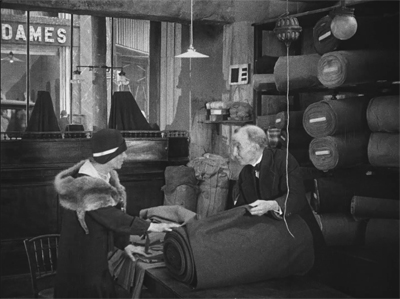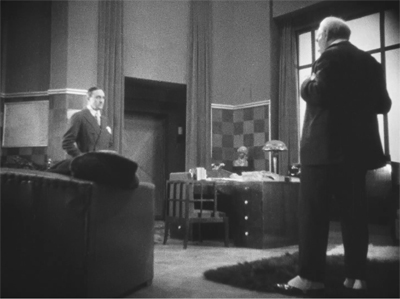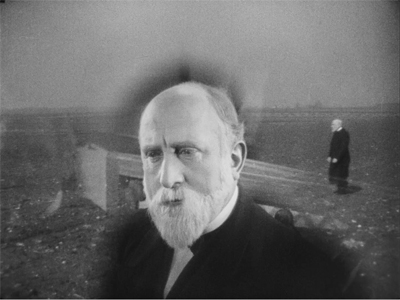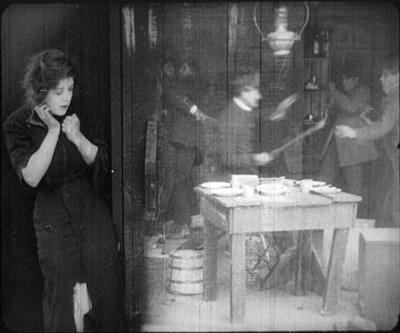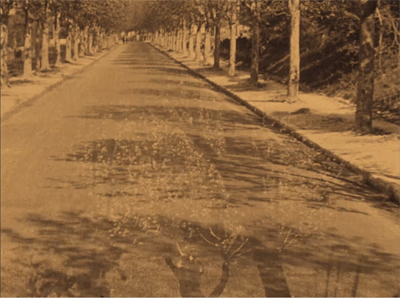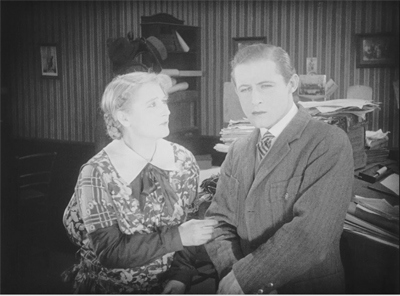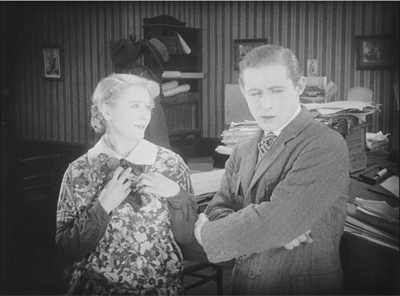Archive for February 2022
Jacques Ledoux, man of the cinema
Jacques Ledoux.
DB here:
Jacques Ledoux, one of the world’s premiere film archivists, died in 1988, but his example and influence live on. An insatiable cinéphile, a friend to filmmakers around the world, and a tireless collector of films for the Royal Film Archive of Belgium, Ledoux did not have the celebrity status of Henri Langlois. Quietly and modestly, he went about the task of building one of the great film libraries and launching traditions that outlived him. He was at the center of Belgian film culture, which was as cosmopolitan as any you would find in bigger European or American cities.
Central examples of his enterprise: EXPRMNTL, the Knokke-le-Zout experimental film festival; the annual Cinédécouvertes summer festival showcasing films of exceptional ambition that had not yet found a local distributor; and the L’Age d’or prize for films challenging “cinematic conformism.” Martin Scorsese’s The Big Shave (1967) had its premiere at Knokke, where it won the Prix L’Âge d’or. The first winner, in 1955, was Agnès Varda for La Pointe Courte; later winners read like a roster of great directors. The impulse continues to this day. In addition, Ledoux established a distribution branch that allowed student groups and film clubs to borrow prints for their screenings.
There were always obscure legends about his past. “Jacques Ledoux”–“Jacques the Gentle”–was a name he took late in life. Eventually we learned that as a boy he survived the Holocaust by jumping off a train shipping him to Auschwitz. By the end of the 1940s he was participating in the Archive’s activities and he eventually became the director.
Ledoux set about creating a vast showcase of world cinema. Five screenings, two of them silent films, ran every day of the year. Admission prices were low, to permit students to come. At the same time, Ledoux oversaw collections of film technology that formed the basis of educational exhibits. The Archive became the center of the city’s film activities.
Ledoux was a passionate collector, amassing films from far outside Belgium. He was curious about all types of cinema, mass-market and esoteric. When the Nouvelle Vague directors wanted to see a film banned in France, they took the train to Brussels and Ledoux’s domain. The same urge for comprehensiveness informed his efforts to document film history, with filmographies and background information in books published by the Archive. He became a moving spirit of FIAF, the International Association of Film Archives; here you can read about his many accomplishments in that area, as well as his eventual friction with the organization.
 His generosity extended to young researchers like Kristin and me, who were welcomed to study films at the Archive. That became the basis of our lifelong friendships with Archive staff and many Belgian cinéphiles, as sometimes chronicled in our blog entries. So grateful was I for Ledoux’s assistance that when I was offered a professorship at my university, I gave it his name. He had just died, and he probably would have protested that he wasn’t worthy; but he has remained an inspiration to us for over forty years.
His generosity extended to young researchers like Kristin and me, who were welcomed to study films at the Archive. That became the basis of our lifelong friendships with Archive staff and many Belgian cinéphiles, as sometimes chronicled in our blog entries. So grateful was I for Ledoux’s assistance that when I was offered a professorship at my university, I gave it his name. He had just died, and he probably would have protested that he wasn’t worthy; but he has remained an inspiration to us for over forty years.
The Archive, now calling itself the Cinematek, has just finished a centenary exhibition devoted to Ledoux. Christophe Piette, organizer of the event, has memorialized it in a lovely multilingual book that gathers reminiscences by Ledoux’s colleagues. There are memoirs by Noël Desmet, Clementine Deblieck, Jean-Paul Dorchain, Hilde Delabie, and Gabrielle Claes, Ledoux’s successor as director. Bernard Eisenschitz, Eric De Kuyper, and P. Adams Sitney offer illuminating appreciations of Ledoux’s contributions. (Sitney’s very full account of Knokke doings is a crucial document in the history of the American avant-garde.) Ledoux’s own voice is represented by a program note for a 1968 science-fiction series. There are many wonderful illustrations–photos, posters, correspondence (Cocteau, Lenica, Akerman). Kristin and I have provided recollections of a man we immensely admired. When you read one of our blog entries on older films, classic or little-known, chances are good that we first saw the film at the Cinematek.
The book is published in a limited edition but is available for purchase at https://cinematek.myshopify.com/en/collections/boeken/products/jacques-ledoux. Every university library with a substantial collection of film literature should acquire a copy!
Anke Brouwers has written a vivid overview of Ledoux’s career for the exposition. Many nifty documents are illustrated.
There are too many citations of Ledoux and the Archive on our site for me to list them. Two extensive ones are “Ledoux’s Legacy” and “Watching movies very, very slowly.” For others, you could try the Search function (using “Brussels”) to find accounts of our many visits.
KIMI: She’s here
Kimi (2022).
DB here:
Just when I worried that the solitary-woman-in-peril cycle had ended, along comes Steven Soderbergh’s Kimi on HBO Plus. Following on the fine No Sudden Move from last year, his latest effort shows how an imaginative script (from Friend of the Blog David Koepp), elegant direction, an unpredictable score, and an engagingly eccentric central performance (from Zoë Kravitz) can revivify some classic conventions.
Some critics think that when parodies show up, the genre is on the downturn. The streaming release of The Woman in the House Across the Street from the Girl in the Window (2022) might suggest that the cycle based on The Girl on the Train (2016) and The Woman in the Window (2021) had run its course. But actually, parodies can show up at any point in the life cycle of a genre. The Great K & A Train Robbery (1925) didn’t kill off the western, and Spaceballs (1987) didn’t wipe out space opera. So it’s good to know that the presence of Woman in the House Across the Street etc. doesn’t make a straightforward but sophisticated entry like Kimi any the less sparkling.
It depends on what I’ve called the Eyewitness Plot, and I’ve tried in Revisiting Hollywood to show how that emerged from the flurry of creative activity we find in 1940s studio cinema. Here the protagonist sees what may be a crime and asks the authorities to intervene. There’s enough uncertainty about the incident itself, and about the reliability of the witness, to make the police doubt that there’s been a crime. So the protagonist has to investigate–while becoming a target of violence in turn. Rear Window (1954) is the standard example, but it has many predecessors in fiction, film, and radio, notably The Window (1949). A variant relies not on sight but sound: the protagonist hears something of criminal consequence. That alternative is played out in Sorry, Wrong Number (1948) and, later, The Conversation (1974) and Blow-Out (1981).
Koepp and Soderbergh, both connoisseurs of classic Hollywood, understand the power of locking us into the perceptions of the witness while at the same time keeping us aware of the larger context of the action. Rear Window is exceptionally strict in limiting us to what Jeff sees and hears, but even then there is a telltale moment when we’re given information that would seem to contradict his belief that his neighbor has murdered his wife. More common is a balanced narrration that ties us to what the protagonist knows but occasionally strays away to supply backstory and ancillary information–usually, just enough to foster suspense.
That’s enough setup. Major spoilers follow! If you haven’t seen Kimi yet, visit and return.
She looks and listens
Angela Childs lives in lockdown. Not just the pandemic but a traumatic sexual assault has made her afraid to leave her Seattle loft, and more basically resistant to emotional contact. She works from home for Amygdala, a company promoting an Alexa/Siri gadget called Kimi. Unlike the competitors, which rely on machine learning, Amygdala has an army of monitors that track actual user dialogues with Kimi in order to correct its errors. Angela is a monitor, and on one recording she hears, muffled by music and noise, what seems to be a murder. After cleaning up a dense recording and inducing a more experienced hacker to find the user’s entire log of Kimi conversations, Angela discovers a crucial one that seems to lead up to the crime.
Here the official reluctance to believe the witness takes the form of an Amygdala executive’s demand to listen to the recording. When Angela insists that the FBI be present for the playback, the corporation takes steps to silence her. The second large section of the film consists of a prolonged chase and, back in her loft, a final confrontation with the men who committed the crime.
The film’s opening establishes, as a sort of intrinsic norm, the alternation between the wider view of the crime’s circumstances and Angela’s limited perspective. The first scene sets up Bradley Hasling awaiting Amygdala’s IPO, but worried because he’s paying off someone for suppressing information about an unnamed woman.
With our curiosity aroused, the plot can afford to introduce us to Angela and her routines in a more leisurely way. Without the Hasling scene, this stretch would be mostly character portrayal, but it gains keener interest as we must wonder how Angela’s fate will intersect with his. Glimpses of Angela fussily making her bed, brushing her teeth, and exercising on her bike also serve to illustrate how she activates Kimi for music and for computer access.
Just as important are the passages of optical POV that show her at her window scanning her street. She looks across at a family in the building opposite, and then looks up and to her left, where she sees the bearded man we’ll learn is called Kevin. He looks back at her.
She swivels her gaze to another window opposite and sees a closed curtain.
Later on the balcony she looks at the window and this time sees Terry, her casual lover, getting ready for work.
She texts him, and after an external, objective pan shot links the two buildings, she asks Terry if he wants to join her for a breakfast at the food truck down below.
However, she’s afraid to leave the apartment, and her fractured activity is rendered in discordant POV angles. After a shot of her in the shower, we see Terry at the truck, from her usual station point. There’s no lead-in shot of her looking; is she watching from offscreen after the shower, or has the narration worked behind her back, while reminding us of her usual position?
Finally, when she collapses on the floor, unable to leave, we get the same high angle on Terry at the truck, texting her and looking up.
Cut back to her still on the floor. The narration is now operating independent of her vision, but with traces of her viewpoint lingering.
The passage is capped by a shot of her at the window looking down, followed by an optical POV of the food truck, sans Terry.
Another shot of her seals the sequence, but when she pulls away from the window, we get an extra, new angle on her: from outside and above. It’s a fair approximation of what Kevin’s viewpoint on her might be. Yet there’s no shot showing him watching.
The “unclaimed” POV shots that close this scene acknowledge that however much we’re tied to the protagonist’s perceptions, the narration won’t limit us to them–that there is wiggle room to supply extra information, and to imply that our heroine is watched by others. This fluctuating access will become important in the crosscutting that provides the film’s climax.
She flees and fights
The fusion of external viewpoints and subjective ones continues in different ways later. When Angela plays the recordings of the attack, Soderbergh gives us her mental imagery–first as blurred cutaways, then as superimpositions. She’s imagining the assault. Later we’ll learn she has been a rape victim herself.
We’ll later discover that the faces of the murderers are those of the thugs who will pursue her. Yet she hasn’t seen them yet, so she can’t plausibly be visualizing them in the scene.
This is an innovation, I think. In the Forties and since, if these visualized images were to accompany the playback, the faces of the killers would have been indiscernible. Soderbergh is willing to violate plausibility in order to gain economy (introducing us to the thugs) and to continue his initial strategy of rendering subjective experience while also adding information for us.
A milder version of the tactic will be used in the climax, after Angela is captured and lying semi-unconscious in the van. We see her awake and apparently listening to the thugs’ dialogue, while superimpositions suggest the passage of the van through the neighborhood.
Incidentally, these are good examples of the persistence of “Impressionist” cinema techniques from the silent era. Soderbergh had made use of them in Unsane (2018), another film about a woman in peril.
Apart from the prologue showing Hasling’s phone call, the film’s first stretch is confined to Angela’s loft. It’s a classic “bottle” situation, a premise that Koepp is fond of. (Cf. his script for Panic Room, 2002.) It’s Angela’s sympathy for the victim of the crime that propels her out of her bubble into the wider world. Here Zoë Kravitz’s performance takes on a new dimension.
In her loft she’s clipped and brusque, dominating everyone she talks to. Her vulnerability, though, is suggested by her obsessive hand sanitizing. Emphasized by her waving her hands to dry them, it becomes practically a nervous tic.
Once outside, she scoots along, arms jammed to her side, head buried in her hoodie, and body as stiff as Max Schreck’s. She tries to be as locked-in outdoors as she is indoors.
Soderberg compensates for her rigidity with camera technique that’s liberated from the confines of her loft. As Manohla Dargis points out in her review, now the film becomes a procession of canted angles and hurtling camera moves, swooping around her and trying to keep up.
Once back in the loft, however, the framing gets poised again and we’re subjected to a precise exercise in suspense. Close-ups and abrupt changes of angle provide exactly what we need to see at each instant.
And things planted quietly in the opening, particularly Angela’s knowledge of building construction, become crucial to her survival. Kimi proves to be a lifesaving sidekick, proving Hitchcock’s dictum concerning Jeff’s use of flashbulbs to save himself in Rear Window: you should use everything you’ve put into your scene.
One nice felicity: You might expect that Terry would turn out to be the “helper male” of so many women-in-peril plots (e.g., the Joseph Cotten character in Gaslight, 1944). Prototypically, this character rescues the protagonist and provides romantic interest for the future. Koepp’s screenplay shrewdly sets Terry up for this role when Angela looks outside during the gang’s siege and sees Terry’s apartment empty.
Later Terry is shown in a street-level, objective shot, walking to Angela’s building. This violation of the intrinsic POV norm suggests an impending rescue. But that prospect is canceled when he stops as if remembering something and turns back.
He does arrive, but too late to help. Terry’s expression as Angela calls 911 is a perfect capstone for the scene. The same wit flashes out of the epilogue, which suggests she’s broken out of her shell, but she still prudently uses sanitizer.
The domestic suspense thriller focused on a female protagonist remains a popular genre of novels. I devoted a chapter to it in my forthcoming book Perplexing Plots: Popular Storytelling and the Poetics of Murder. There haven’t been many film adaptations of them since The Woman in the Window, but maybe the neo-Gothic The Girl Before (2021) will unleash more. In the meantime, I’m glad that Koepp and Soderbergh have found ways to give the conventions brisk new life.
David Koepp remarks: “You’re right about the lingering effect of 40s cinema, as you and I have discussed many times. I’d say Sorry, Wrong Number was the direct antecedent here. . . I mean, the party line in Sorry, Wrong Number is basically the Alexa of its time, no?” Interesting in this connection is that the lengthy survey of Angela’s loft in the epilogue shows Kimi no longer there.
Another grace note: KT wondered if the precariously balanced kombucha bottle is psychologically revealing. It turns out to be the consummation of a moment from an earlier Koepp film.
The bottle on the edge of the counter — that was me making good on a setup I did in Secret Window, fifteen years ago. Seriously. There’s a shot in there where Johnny’s character, in a state of high anxiety and agitation, sets a glass down on his kitchen counter hastily, and doesn’t notice it’s only half on the counter. We did seventeen or twenty takes to get exactly the right gravity-defying balance on the edge. It was a pretty literal visual metaphor — you know, he’s on edge.
Thing was, in post-production I realized I had put in a perfect setup, but never paid it off. Why not have the glass fall and smash twenty minutes later, when we’re least expecting it?? Wished I had, never did.
So I used it again in Kimi, but with the (to my mind) required payoff, and at a moment of high tension. So, Angela, in her argument with Terry, is highly agitated, and smacks the bottle down on the counter carelessly, not realizing how close it is to the edge. (The KT hypothesis proves correct!) Angela forgets about it. So do we. Ten minutes later, when we’re all keyed up about something else, SMASH!
Thanks to David for corresponding.
The Hitchcock remark is this: “Here we have a photographer who uses his camera equipment to pry into the back yard, and when he defends himself he also uses his professional equipment, the flashbulbs. I make it a rule to exploit elements that are connected with a character or location. I would feel that I’d been remiss if I hadn’t made maximum use of those elements” (Truffaut/Hitchcock, rev. ed. 1983, 219).
Kimi (2022).
When the image ruled: Julien Duvivier in the silent era
Maman colibri (Mother Hummingbird, 1930).
DB here:
Rewind the tape of film history. What if cinema had been invented as a perfect audiovisual medium, with images exactly synchronized with sound? What would the evolution of film form and style have been like?
Actually, Edison and other early inventors wanted sound to accompany the picture. Technical obstacles to sync sound initially proved too strong, and the fact that the public approved of the silent image led to a delay in fulfilling what André Bazin called “the myth of total cinema.”
It’s long been felt that this delay was a good thing for the artistic development of the medium. Perfect image/sound coordination would have led filmmakers to a line of least resistance, a simple reliance on recording what was taking place in front of the camera. The absence of dialogue forced filmmakers to develop techniques of visual storytelling. “The time of the image,” thundered Abel Gance, “has come!”
Some film techniques were borrowed from theatre and painting, but others became identified closely with the moving image. Techniques such as camera movement, analytical cutting, and rhythmic crosscutting, have analogs in other arts but remain distinctly “cinematic” (chiefly because of cinema’s ability to control duration). During the 1910s and 1920s, filmmakers refined pictorial narrative in ways that couldn’t have been foreseen earlier, and avant-garde movements showed that the new medium had remarkable abstract and non-narrative possibilities as well.
Because of all this, it seemed that sync sound came along just when the silent cinema had reached an expressive peak. By then, people knew the powers of the moving image, and so could integrate sound with it to create an audiovisual art form.
I think there’s a lot to be said for this viewpoint, though it was often used as a cudgel to beat early talkies as “uncinematic.” There’s no denying that many filmmakers who made outstanding silent films, from Hitchcock, Lang, and Ford to Lubitsch, Eisenstein, and Renoir, managed to retain pictorial richness while relying on the unique contributions sound could make. In a teaching exercise, Eisenstein asked students to plan the filming of the assassination of Julius Caesar as a silent film, and then go back and reconceive it as a sound film. That way, the new synthesis could exploit the strengths of both ingredients.
 Julien Duvivier’s silent films are good examples of the push toward maximal expressivity by means of visuals. He accepted the coming of sound, even welcoming color and depth, but by then he had already accepted the 1920s urge toward an overwhelming pictorial experience. At one level, he saw the need for spectacle–either shooting on striking locations, employing masses of actors, or creating flamboyant studio sets. At another level, the visual storytelling could be more inward-turning. How could moving images illuminate the thoughts and feelings of characters, the access to minds given through language in prose fiction and on stage? We can see in Duvivier’s late silent work a pressure in both directions: a love of eye-smiting locations either found or fabricated, and an urge to plunge into characters’ minds at every moment.
Julien Duvivier’s silent films are good examples of the push toward maximal expressivity by means of visuals. He accepted the coming of sound, even welcoming color and depth, but by then he had already accepted the 1920s urge toward an overwhelming pictorial experience. At one level, he saw the need for spectacle–either shooting on striking locations, employing masses of actors, or creating flamboyant studio sets. At another level, the visual storytelling could be more inward-turning. How could moving images illuminate the thoughts and feelings of characters, the access to minds given through language in prose fiction and on stage? We can see in Duvivier’s late silent work a pressure in both directions: a love of eye-smiting locations either found or fabricated, and an urge to plunge into characters’ minds at every moment.
These revelations come courtesy of Flicker Alley’s massive collection of nine of his late 1920s features, all beautifully restored by the dedicated team at Lobster Films. Poil de Carotte (1926), the earliest item in the box, shows a filmmaker utterly in command of the resources of the “mature silent cinema.”
Most of the films between that and Au bonheur des dames (1930) have been largely unknown and forgotten, and their revelation here is unlikely to add another masterpiece to his career log. But they’re very impressive for revealing the diversity and ambitions of mainstream French cinema of the 1920s. Moreover, Duvivier was prepared to carry a commitment to pictorial storytelling to striking extremes.
Eye candy, natural and artificial
Duvivier’s first film, Halcedama (1919; not in this collection), a French “Western,” made extensive use of the rugged terrain of the Corrèze region, “the savage heart of France,” according to a title. Extreme long shots (akin to those in Feuillade’s Tih Minh) let mountains and valleys dwarf the characters. The 1920s films tend to be melodramas, but they too exploit locations with expansive production values.
Before moving to cosmopolitan scenes, Le Tourbillon de Paris (1928)’s opening scenes give off a palpable sense of cold in their bleak display of a man struggling through the snow in Tignes, in the French Alps. The same regional realism is present in La Divine Croisière (1929), shot on location in several coastal cities.
L’Agonie de Jérusalem: Revelation (1927) tells of an anarchist who rejects bourgeois comforts, including “paternal power,” and agitates for world revolution. When he’s blinded, he returns to the family home in Jerusalem. There he undergoes a conversion through identifying with Christ’s suffering and is miraculously cured. Duvivier took the production to Jerusalem, and the film features impressive scenes of the area, including the Wailing Wall and the Garden of Gethsemane.
For Maman Colibri (1930), Duvivier’s heroine, a woman who leaves her husband for a soldier young enough to be her son, follows him to his post in Algeria. The film exploits both desert landscapes and the sumptuous gardens of the Villa Arthur in Algiers. Closer to home, but still carrying the whiff of the picturesque, was Le Mariage de Mlle Beulemans (1927), a comedy about rivalry between brewers. The film begins with a montage of Belgian cities and their landmarks, culminating in a documentary montage of Brussels. The film is bookended by a double wedding at the city’s splendid Grand Place.
Probably the location shooting that will most attract a viewer today is the climactic sequence of Duvivier’s parody of Feuillade serials, Le Mystère de la Tour Eiffel (1927). It consists of a long chase up the girders of the tower, with actors scrambling after one another in vertigo-inducing shots.
As with Tih Minh, you have to marvel at the acrobatic skill and sheer guts of the performers.
Duvivier also took advantage of the resources of well-endowed French studios, which had yielded impressive set design in Gance’s Napoleon (1927), L’Herbier’s L’Argent (1928), and Dreyer’s Passion de Jeanne d’Arc (1928). Le Tourbillon de Paris, tracing the return of a stage diva to the city she loves, shows her reentry into the haute monde in a huge nightclub scene. This is later matched by her triumph in before a theatre audience.
More stylized sets, in a comic vein, characterize the Antenna gang in Mystère de la Tour Eiffel. They use , the Tower to transmit coded messages to their agents. The gang headquarters may be a down-market parody of Léger’s modernist sets of L’Herbier’s L’Inhumaine (1924).
Probably the most famous achievement of Duvivier’s set design is the staggering department-store set in Au Bonheur des Dames, Zola’s story of big business crushing local shops. Sweeping tracking and crane shots enhance the scale of Au Bonheur des Dames, modeled on the Galeries Lafayette (where a few shots were taken as well). The film contrasts the vista of the main shopping area with the cramped store of the fabric merchant Baudu.
The same difference emerges in the broad layout of the office of store’s boss Mouret and Baudu’s pinched apartment, built as a complete set of rooms.
Yet the sets can be less ostentatious and still powerfully functional. The simple, geometric grids and figure placements of the investiture scene in La Vie miraculeuse de Thérèse Martin (1929) gather force through their precise articulation of the stages of the heroine’s acceptance into the sisterhood.
In this twenty-minute sequence, details of gesture and position exude respect for the rigors of ritual and the sincerity of the girl. Duvivier’s calm precision reminds me of scenes in Bresson’s Anges du péché. At the same time, the impersonality of the ceremony is heightened by cutaways to Thérèse’s father, at once pious and regretful; with her novitiate, he will die alone. For him, Duvivier adds Impressionist flourishes to emphasize that the grille shuts him off from her.
Such scenes create a sort of “intimate spectacle” that goes beyond sheer scale.
In a fine crowd scene in La Divine Croisière, Duvivier deploys expressive detail within a mass of people. The predatory capitalist Kerjean has ordered a defective ship to sail, and the townsfolk fear that it has been lost. Simone, a courageous young woman, calls a meeting in which she asks them to cease mourning and set out to look for the sailors. In a brief montage reminiscent of the cream-separator sequence in Eisenstein’s Old and New, close-ups show the villagers gathering hope under Simone’s visionary appeal.
With this sort of intimacy, however, we move close to the second pictorial strategy that characterizes Duvivier and many of his peers: picturing the workings of the mind.
Getting inside
Kristin has pointed out that the 1910s were an era when many filmmakers wanted to go beyond simply creating a coherent story by adding expressive dimensions to the action. Many American films of the period try to illustrate characters’ thoughts, chiefly through flashbacks. There were more elaborate experiments as well, with attempts to portray dreams, hallucinations, and even alternative courses of action. (Some examples here.) In The Gangsters and the Girl (1914), a young woman imagines two consequences of a robbery.
Halcedama had, like many other French films, incorporated simple subjective techniques like these. The looming figure of the protagonist’s dead father interrupts several scenes, and one scene multiplies the presence of the man the protagonist has come to kill.
The early 1920s saw French filmmakers eagerly exploring other resources. Duvivier’s films are much of their time in their inclusion of wide-angle shots with big foregrounds, a great range of camera angles, freely moving camerawork (including crane shots), heavy use of superimposition and dissolves, and a multiplication of cuts, often very fast-paced.
Abel Gance’s La Roue (1922) and Jean Epstein’s Coeur fidèle (1923) crystallized these possibilities, and other filmmakers felt free to flaunt pictorial display. Many of these devices were put in the service of enhanced subjectivity.
In scene after scene, Duvivier dwells on the moment by plunging into characters’ reactions to the scene, given not through dialogue but through imagery. One of his favorite devices is the superimposition–not as a single item, as in The Gangsters and the Girl, but as a flurry of images melting into one another, suggesting a stream of consciousness. In L’Agonie de Jérusalem, Alice recalls the childhood she shared with Jean, as images rolling along a road.
The heroine of Le Tourbillon de Paris is dazzled by the array of jewels and dresses her husband offers her, and the heroine of Maman Colibri is captivated by her dance partner.
Poil de Carotte is a virtual anthology of ways of conveying mental states. This tale of child abuse probes the fear and despair François feels by being trapped in a family full of hate. The opening uses superimpositions of family members to show how it’s painful for him to write an essay about them.
His cruel mother haunts his dreams, and her attacks on him are given in distorted imagery.
As he rigs up a noose with which to hang himself, we get a rapid montage, in superimposition, of memories of ill treatment.
Nearly every film is packed with these inserted passages, which seek to deepen the drama without use of intertitles. Today they look old-fashioned, even though our films continue to use them. Back then they may have become a bit tiresome. Serge Bromberg’s text for the Flicker Alley booklet quotes a 1930 review:
Why does Julien Duvivier sometimes insist on techniques that seem obsolete today? Overprints [superimpositions] and special lenses no longer surprise us.
When they work best, I think, it’s because they find fresh material that allows them to unexpectedly expand the moment of a scene. For example, François’s father is not so much cruel as indifferent to the boy. His gradual realization that the mother is working the boy like a dog is given two ways. First, a multiple-image shot shows several versions of his son busy in the garden.
Then a series of dissolves following the father’s advance to the camera shows the sheaves now sprung up in profusion–all as a result of the boy’s labor.
Still, Duvivier was able to probe minds without such devices. The village meeting in La Divine Croisière, mentioned above, is an example. So too is a little bit of byplay in Le Mariage de Mlle Beulemans.
Albert, a Parisian, is working in a Brussels brewery and has fallen in love with the boss’s daughter Suzanne. He leaves a corsage on her desk while she’s out. Seraphin, her shady fiancé, has found it there and, when she returns, offers it to her as his own gift. When Albert returns and finds her wearing it, he assumes that he’s won her affection–until he realizes Seraphin’s ploy. Duvivier could have played this out in a series of superimpositions in which Albert imagines her finding it, thinking of him, and wearing it for his sake. Instead, it’s left to the actors in a simple two-shot.
Albert sees her caress the corsage and he’s pleased. But then she says Seraphin gave it to her. There’s no dialogue title. She turns her head to the left to indicate he’s outside.
Albert starts to claim credit, but thinks the better of it and turns away. She notices and asks if he gave it to her.
He doesn’t admit it, but she realizes the truth.
As she ponders Seraphin’s deceit, Albert understands. He approaches, but she wards him off, still believing she must marry her fiancé.
Admittedly, this little pas de deux takes place after a dialogue in which Albert imagines all the slights he’s suffered as an outsider to the company, and before a lyrical passage in which he conjures up finding a flower in a lake. Duvivier couldn’t resist expanding the situation through his usual means. But the understated playing of the pair, without any verbal explanation, shows that he didn’t always need flashy visualizations to evoke characters’ changing reactions to a situation.
Duvivier remained active until his death in 1967, racking up an astonishing seventy-one features. There are plenty I have yet to see, but I’ll just signal some landmarks. Although he has remained most famous for his two Poetic Realist achievements, La Belle équipe (1936) and Pépé le Moko (1937), his accomplishments were more wide-ranging. Allô Berlin? Ici Paris! (1932) is a charming early sound comedy, and Un Carnet de bal (1937) and La Fin du jour (1939) won acclaim around the world. In Reinventing Hollywood I called attention to his significant American work: Lydia (1941), Tales of Manhattan (1942), and Flesh and Fantasy (1943). His powerful Simenon adaptation Panique (1946) is admirable, as are the lighter-hearted Sous le ciel de Paris (1951) and La Fête à Henriette (1952). Marie-Octobre (1959) is an interesting experiment in the three unities. And his later policiers have their supporters, especially Voici les temps des assassins (1956). Attacked by the Nouvelle Vague as a fossilized academic, he has reemerged as a robust example of the enduring force of French film tradition. The Lobster/Flicker Alley box confirms him as a sturdy storyteller and an ambitious pictorialist.
Halcedama is available on the Cinémathèque Française website, among many other discoveries. Gance’s broadside, “Le Temps de l’image est venu!” is in L’Art cinématographique II, ed. Léon Pierre-Quint, Abel Gance, Lionel Landry, and Germaine Dulac (Paris: Félix Alcan, 1927), 83-102. It is available in an Arno Press reprint (New York, 1970).
The best book on French silent film is Richard Abel’s magnificent, encyclopedic French Cinema: The First Wave, 1915-1929. A very complete account of Impressionist cinema is in Noureddine Ghali, L’Avant-garde Cinématographique en France dans les années vingt: Idées, conceptions, théories (Paris: Experimental, 1995). Kristin’s argument about the 1910s is set forth in “The International Exploration of Cinematic Expressivity,” in Film and the First World War, ed. Karel Dibbets and Bert Hogenkamp (Amsterdam University Press, 1995), 65-85.
Kristin picked Au Bonheur des dames as one of the best films of 1930. I discuss Lydia in a Criterion Channel installment, teased here. French Impressionism has remained a powerful, if usually indirect, influence on modern directors–for example, Scorsese.
Le Mariage de Mlle Beulemans (1927).
Benign fearmongering: Worth a try
2014 as rehearsal for 2022.
DB here:
With the Democrats on the defensive in poll after poll, and Republicans poised to sweep House and Senate races, voices are raised to suggest that a new strategy for 2022 is needed. The idea of voting to protect democracy and equal protection under law may be too abstract and absolute for an electorate preoccupied with inflation, the pandemic, crime, and social turmoil. People will vote for a return to “normal everyday life.”
An emerging strategy, proposed by Josh Barro and others, is for Democrats to show that their policies are facilitating just that return to normalcy. This seems reasonable, but I think it is only part of an answer.
The contemporary Republican Party trades on what cognitive psychologists call loss aversion. The Democrats, we’re told, will take away something precious: gun rights, white people’s pride, the choice to get vaccinated, even life itself with abortion. The fear of loss is a powerful motivator.
The Democrats have largely not embraced a fear-driven narrative. They stress aspiration and expansion of opportunity. But the promise of a better life isn’t as galvanizing as the threat of a worse one.
I therefore suggest that the Democrats try a strategy of fearmongering on their own. Instead of the fantastic threats conjured by the GOP (sharia law, rule by George Soros), there are quite plausible threats that would follow from Republican victories in 2022 and 2024. The Democrats should state these crisply and make vivid what life under unified Republican rule would be like.
We don’t have to guess. On the basis of past legislative and executive initiatives, as well as the 2016 Republican Party Platform, we can confidently assert that these policy goals will be targets. (All quotations come from that platform, unrevised in its 2020 version.)
The first target will be the elimination of Obamacare, with or without a replacement. In addition, Dodd-Frank would be purged, as would the Consumer Protection Bureau and the Internal Revenue Service, the latter because a new tax code would be “simpler and easier to understand”—and somehow eliminate tax cheats. Killing the IRS also eliminates the principal agency administering the earned-income tax credit, the child tax credit, and other programs.
There will be an initiative to privatize Social Security and Medicare, long targets of GOP cuts. Also to be privatized are mass transit systems, road and bridge improvement, the postal service, and the Veterans Administration. Funding for Amtrak would cease, as would government loans for college education. Thousands of acres of public lands would be thrown open to exploitation “even if these resources will not be immediately developed.”
The principle of local sovereignty would lead to a radical Federalism. Republican states would manage their own energy resources, determine their own marriage policies, decide their own environmental regulations, control federal lands in their boundaries, and establish “constitutional carry” gun laws. As is already happening, legislatures are devising educational policies controlling curriculum, but in addition the GOP encourages the end of tenure and the recruiting of ex-military and business people for teaching posts. Bible study would be a part of the curriculum, and sex education would emphasize abstinence. Nothing in principle would prevent the arming of teachers or even certain students.
Workers can expect a further pressure to eliminate unions. All states would be encouraged to establish right-to-work laws, reinforced by a “national law to protect the economic liberty of the modern workforce.” This is said to be necessary because of the need for franchise businesses (a dominant sector of the economy) to maintain stable wage structure. The GOP’s long-standing objection to the unionization of government workers will be enacted in a Congressional inquiry into the disparity between federal workers’ pay and that of corresponding private-sector employees. That inquiry can lead only to a deflation of the wages of federal workers. As for those on welfare, the 1996 work requirements will be restored.
Hot-button culture war issues will be settled in draconian fashion. The US will withdraw from the Kyoto Protocols and Paris Agreement and no longer contribute to the United Nations Framework on Climate Control. A wall will be built on the southern border. The census will no longer count residents, only citizens. The public display of the 10 Commandments will be encouraged.
The bases of all these transformations is the plan for Congress to put in place a Balanced Budget Amendment that would cap spending to the average of GDP. This would make constitutional the drastic downsizing of federal services. A constitutional convention would also offer the opportunity for further amendments on whatever subjects the delegates wanted to raise.
President Biden need not have asked, “But what are they for?” These are the things they have been pushing for a very long time, and they are within striking distance of achieving them. In addition, we must remember that these policies have been advanced by the “moderate” center of the Republican party. What the more extremist members would advocate can scarcely be imagined, though we are given daily previews–including the threat to imprison political opponents.
A much-noted 2012 New York Times article showed that government benefit programs “invisibly” support American life to a remarkable degree. The reporters found that the government provides nearly $1 in benefit for every $4 in other income. Just as important is the need to maintain the middle class, which has become dependent on unemployment benefits, earned-income tax credits, minimum-wage benchmarks, and other forms of aid.
Democrats should, at every opportunity, remind Americans what losses are likely after 2022 and 2025. Appealing to altruism and principle is fine, but out of sheer self-interest many voters might find themselves averse to life under unified Republican rule. It may be that citizens yawn when asked to uphold principles of democratic governance and the rule of law. They’re unlikely to do so at the prospect of losing Social Security, Medicare, health insurance discounting preexisting conditions, school lunches, disability payments, and other taken-for-granted benefits of contemporary civic life.


















